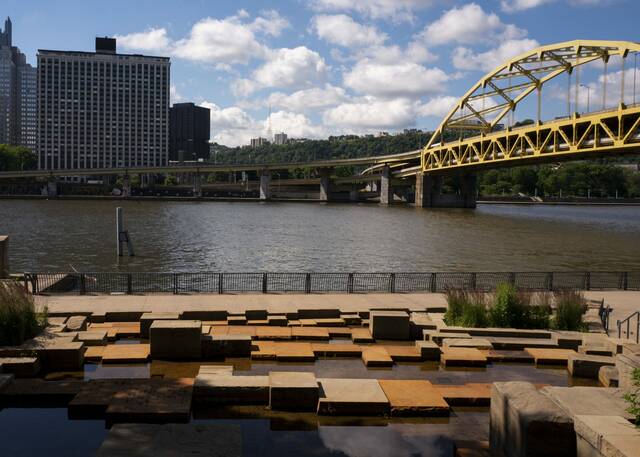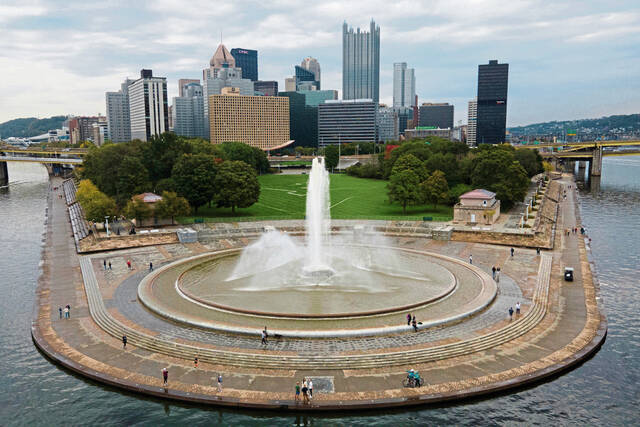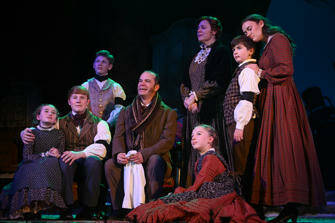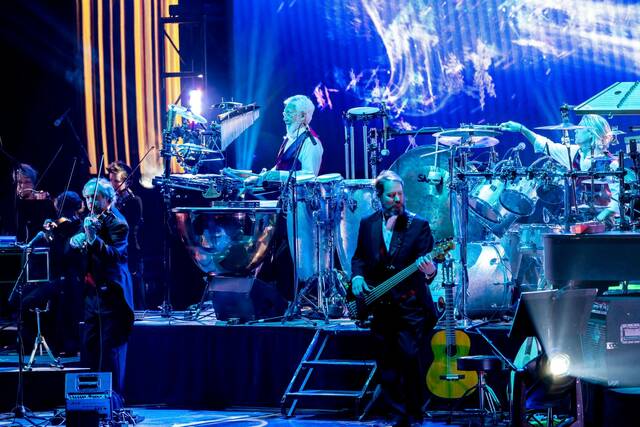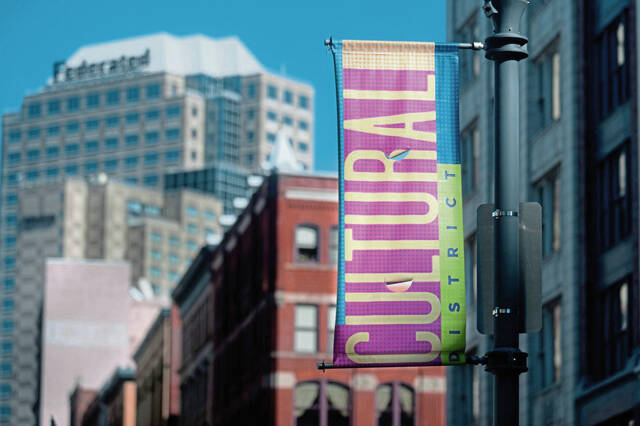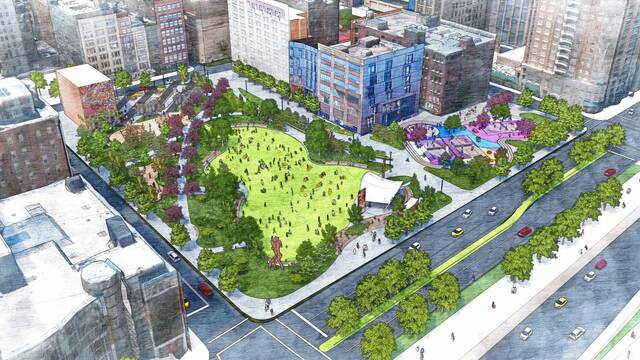Pittsburgh Mayor Ed Gainey’s proposal to reorganize the city’s Art Commission and percent for art program received support from City Council this week.
The changes come weeks after Gainey dismissed all prior members of the Art Commission with little explanation.
City Council on Monday unanimously supported the changes in a preliminary vote.
Under the proposal, the Art Commission will be divided into a committee dedicated to reviewing public art — like paintings and sculptures. Another will focus on civic design — including construction and renovation of public buildings, parks and certain projects in the right-of-way.
The idea is to reduce the number of proposals before the volunteers who serve on the commission and ensure that the commissioners voting on the projects have expertise that matches what they review, said Sarah Minnaert, assistant director of public history, art and design in the Department of City Planning.
Under the proposed legislation, the Public Art Review Committee — which would consist of four practicing artists or art professionals and one community representative — would be tasked with reviewing and approving the “addition, modification, relocation and removal of items of public art in the public realm.”
The Civic Design Review Committee — which would be comprised of four practicing architects, urban designers or built environment professionals and one community representative — would be responsible for approving “the design of new structures and designed sites in the public realm,” or renovations to them.
Previously, the Art Commission had been made up of a painter, a sculptor, three architects and two others.
Andrew Moss — who had served as the president and chairman of the Art Commission until the mayor removed all members last month — said he was “generally supportive” of Gainey’s changes.
“This should help to focus the commission’s expertise and hopefully streamline the hearing process,” he said.
The members’ terms would coincide with the mayor’s, according to the proposed legislation, and commissioners would elect their president and vice president for each committee at their first meeting of the year.
The mayor would appoint members to each committee, with City Council approval. The directors of the departments of public works and mobility and infrastructure would serve as non-voting members.
Related:
• Gainey to replace all members of Pittsburgh Art Commission
• Gainey looks to revamp Art Commission after removing all prior commissioners
Both committees would meet as a full body at least twice a year. Each committee would meet on its own at least six times annually.
Councilwoman Erika Strassburger said she would like to see the mayor make his appointments quickly so that they can begin their work in January. She also suggested the mayor consider reappointing some of the individuals who had served on the Art Commission previously.
Moss had voiced concerns about whether eliminating all of the existing commissioners would lead to a lack of institutional knowledge and experience and hinder the commission’s abilities to vote on projects that had already been presented.
“I continue to believe that the most unfortunate aspect of the mayor’s process of dismissing the entire existing Art Commission is a serious loss in institutional knowledge,” he said.
Director of City Planning Karen Abrams told council members that the administration was working to identify candidates for the reorganized commission posts. She did not specify whether any of them had served on the commission previously or when their names would be announced.
The legislation would require that all action from either committee be initiated by the mayor, who would send a written directive to the committee before they could ratify any decisions.
A related measure would make changes to the city’s percent for art program, which stipulates that at least 1% of the amount of municipal construction or renovation of public buildings be set aside for public art. Established in 1977, the rule applies to projects that cost $50,000 or more.
Currently, the city department in charge of the project includes the required public art in that specific project budget. Under Gainey’s proposal, the Department of City Planning’s capital budget each year would include funds for public art equivalent to one percent of the total construction or renovation project costs slated for the entire year.
The current system doesn’t focus on equitable distribution of art throughout the city or engage with residents and other stakeholders about where art should be located, Minnaert said. The proposed change, however, would allow the city to work with community organizations and study neighborhood plans to determine areas that could most benefit from new public art installations.
“It’s a way to take the same dollars — no less, no more — and reorganize them to make a bigger impact,” she said.
Councilman Bruce Kraus said he supports the new approach.
“I’d like to see where we can take this,” he said.
Moss said he, too, favored the change and felt it could allow for “more significant art projects” throughout the city.
The proposals will need to come before City Council for approval, Minnaert said.
Also included the legislation package is a measure that would create the Public Art Trust Fund, which would collect contributions to the Public Art Performance Point program. The program, established in the city’s zoning code in 2018, allows developers to increase the density of their developments by incorporating community priorities, including public art.
The fund also would be able to receive private charitable donations, matching funds from charitable entities and budgeted transfers from the general fund.
Projects funded through money held in that fund also would need council approval.
City Council unanimously supported all three related measures in a preliminary vote Monday. Councilman Ricky Burgess was not present for the vote.
The measures could receive final approval next week.


